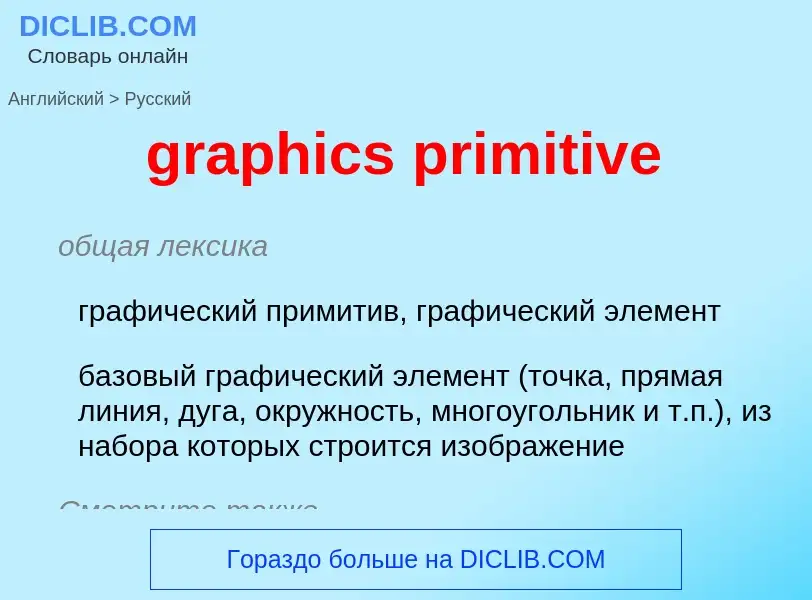Vertaling en analyse van woorden door kunstmatige intelligentie ChatGPT
Op deze pagina kunt u een gedetailleerde analyse krijgen van een woord of zin, geproduceerd met behulp van de beste kunstmatige intelligentietechnologie tot nu toe:
- hoe het woord wordt gebruikt
- gebruiksfrequentie
- het wordt vaker gebruikt in mondelinge of schriftelijke toespraken
- opties voor woordvertaling
- Gebruiksvoorbeelden (meerdere zinnen met vertaling)
- etymologie
graphics primitive - vertaling naar Engels
общая лексика
графический примитив, графический элемент
базовый графический элемент (точка, прямая линия, дуга, окружность, многоугольник и т.п.), из набора которых строится изображение
Смотрите также
математика
примитивное кольцо
общая лексика
примитивно-рекурсивный
Definitie
Wikipedia
In vector computer graphics, CAD systems, and geographic information systems, geometric primitive (or prim) is the simplest (i.e. 'atomic' or irreducible) geometric shape that the system can handle (draw, store). Sometimes the subroutines that draw the corresponding objects are called "geometric primitives" as well. The most "primitive" primitives are point and straight line segment, which were all that early vector graphics systems had.
In constructive solid geometry, primitives are simple geometric shapes such as a cube, cylinder, sphere, cone, pyramid, torus.
Modern 2D computer graphics systems may operate with primitives which are curves (segments of straight lines, circles and more complicated curves), as well as shapes (boxes, arbitrary polygons, circles).
A common set of two-dimensional primitives includes lines, points, and polygons, although some people prefer to consider triangles primitives, because every polygon can be constructed from triangles. All other graphic elements are built up from these primitives. In three dimensions, triangles or polygons positioned in three-dimensional space can be used as primitives to model more complex 3D forms. In some cases, curves (such as Bézier curves, circles, etc.) may be considered primitives; in other cases, curves are complex forms created from many straight, primitive shapes.

![A 3D [[torus]] prim created in [[Second Life]], an example of a parametric shape A 3D [[torus]] prim created in [[Second Life]], an example of a parametric shape](https://commons.wikimedia.org/wiki/Special:FilePath/Second Life torus prim.jpg?width=200)
